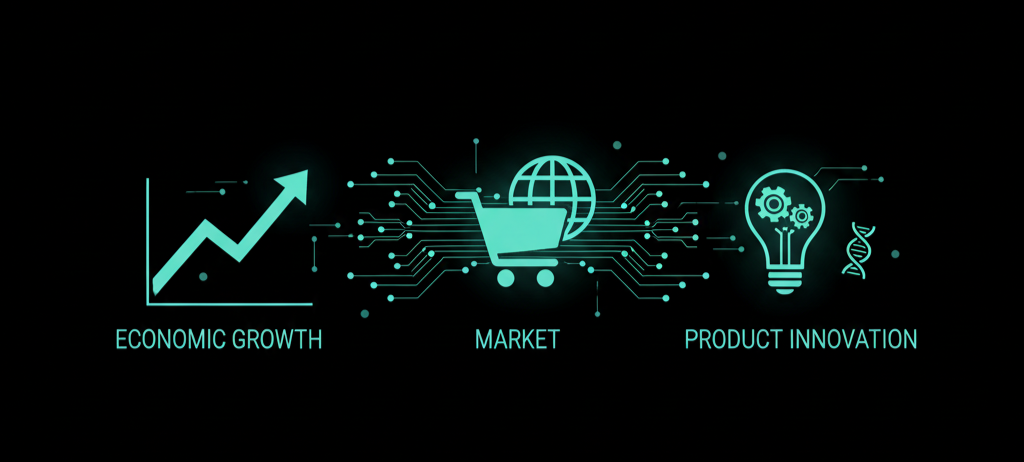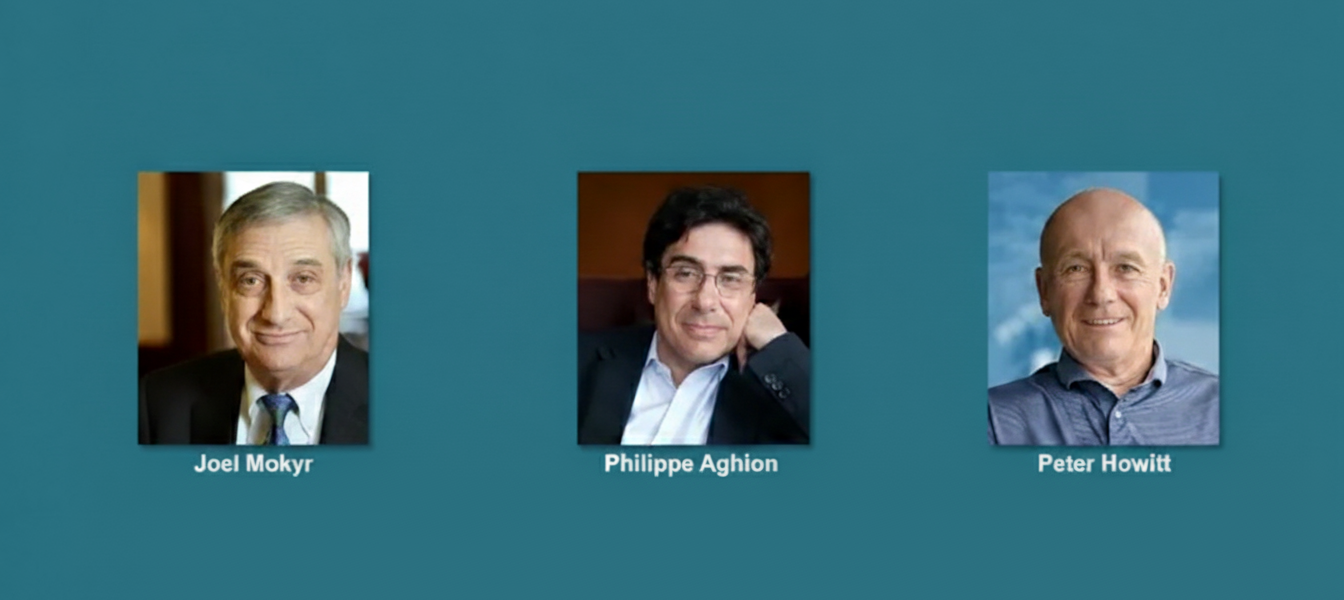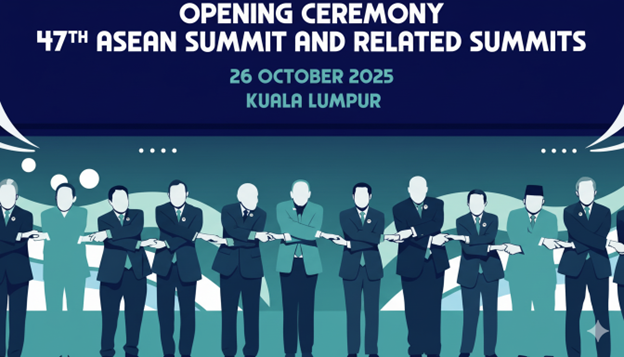Innovation, Creative Destruction, and the Economics of Sustained Growth

Quantum Leaps: From Theory to Reality
October 10, 2025
Trump’s Week of Trade Diplomacy in Asia
November 24, 2025The 2025 Sveriges Riksbank Prize in Economic Sciences in Memory of Alfred Nobel has been awarded to Joel Mokyr, Philippe Aghion, and Peter Howitt for their pioneering research on innovation-driven economic growth. Their combined work has transformed the understanding of how technological change, institutional design, and competition shape the long-term trajectory of economies. [1]
Core Contributions
The question their research answers is straightforward but deep: why do some economies just keep growing and others get left behind? The laureates came at it from different angles, collectively weaving a compelling account of how innovation fuels progress.

Joel Mokyr applied a historical perspective to economic growth. His work examined why the Industrial Revolution was not an accident of good fortune, but rather a consequence of cultural and institutional factors that stimulated inquiry, discussion, and trial and error. Mokyr proved that innovation is a product of environments that promote knowledge, remunerate problem-solving, and permit ideas to flow freely. He characterized growth as an accretion process of knowledge development where each generation adds upon the last. Essentially, his research indicates that technological development is not only a matter of discovery, but also of social attitude and receptiveness.
Philippe Aghion and Peter Howitt built the contemporary Schumpeterian model of economic growth on the idea of creative destruction. Their model depicts the way new technologies and ideas displace old ones, creating ongoing renewal. Innovation in this perspective is both creative and disruptive. It raises output and creates wealth but also replaces incumbent firms, industries, and workers. Aghion and Howitt’s contribution established the mathematical and theoretical underpinnings of the process of renewal, demonstrating that sustained growth relies on the ability to balance incentives to innovate and competitive forces.
Altogether, their work integrates history, theory, and contemporary policy. Mokyr’s focus on the cultural prerequisites for advance supplements Aghion and Howitt’s analytical argument about how innovation renews itself through market forces. The result is a full picture of growth as a dynamic system that relies no more on ideas and institutions than it does on economic forces.
Strategic and Economic Implications
The laureates’ insights offer lessons that extend beyond macroeconomic theory into the realm of strategy, corporate decision-making, and public policy. In today’s rapidly changing environment, innovation is no longer an occasional initiative but a structural necessity.
For firms, the theory of creative destruction is both a warning and a guide. Businesses that rely solely on existing products or efficiencies risk obsolescence when new technologies emerge. Strategic resilience requires foresight and flexibility. Successful organisations tend to:
- Invest consistently in research, data, and product development.
- Encourage internal experimentation and tolerate calculated risk.
- Build partnerships that accelerate access to new knowledge and technology.
- Revisit business models regularly to avoid inertia.
These actions transform innovation from a one-time project into a continuous process of renewal. In this way, creative destruction becomes a managed cycle rather than a crisis.
For governments and policymakers, the implications are equally significant. Innovation-driven economies depend on education systems that teach adaptability, regulatory frameworks that enable experimentation, and financial systems that reward risk-taking. Yet, as Aghion and Howitt’s work reminds, innovation also disrupts. Workers in declining sectors need retraining opportunities, and social safety nets must protect those affected by technological transition. Managing innovation therefore requires balance between encouragement and inclusion.
Broader Economic Reflections
The 2025 Nobel award comes as the world economies are undergoing change with unprecedented velocity. The work of laureates is both reassuring and a warning of what the future will bring.
Innovation surely increases productivity and raises living standards, but it also increases inequalities between people, places, and countries. Institutionalized and research-capable countries grow faster compared to those that lack the same. At the level of societies, skilled workers engaged in digital and cognitive jobs gain more compared to workers in low-productivity sectors. To make innovation-led growth inclusive, policies should focus on growing participation in the innovation economy by increasing education, digital connectivity, and access to finance on an equitable basis.
Another issue is the absorptive capacity of institutions. As technological change accelerates, governance gaps ensue. The sudden growth of artificial intelligence, for example, has introduced new ethical and labour issues that current legal frameworks are unable to contain. Institutions need to change as fast as the technologies they regulate. Without such absorptive capacity, innovation leads to inefficiencies or social unrest instead of sustainable development.
Mokyr’s historical perspective is particularly pertinent here. For much of human history, economic growth was sporadic, punctuated by stagnation or regression. Growth remained sustainable only once societies adopted scientific reasoning, free discourse, and institutional flexibility. The same lesson is relevant today. If innovation is to continue as a global driver of prosperity, it will have to be buttressed by receptivity to ideas, faith in evidence, and policies that reinforce competitive energy.
Lastly, there exists the global innovation divide. Developing economies largely remain hindered by poor infrastructure, inadequate investment in research, or weak institutional capacity. Closing this divide demands intentional collaboration, sharing of knowledge, and policies that foster local innovation systems. Global growth will be sustainable through ensuring innovation is not located in a handful of economies but shared across regions.

Conclusion
The 2025 Nobel Prize in Economic Sciences confirms an age-old wisdom: growth is not self-sustaining. It is nurtured through a mix of innovation, competition, and good institutions.
The work of Mokyr, Aghion, and Howitt offers a template for organisations and economies looking for long-term stability. It emphasizes that technological advance has to be accompanied by openness, a respect for knowledge, and structures which channel both the creation and displacement it renders.
To companies, that implies infusing innovation into strategy, spending on learning, and embracing the fact that adaptation is an ongoing process. To governments, it implies crafting policies that spur advancement while preserving equity and inclusion.
As innovation, institutions, and competition fall into place, growth becomes not merely faster but more sustained. That is the most precious gem presented by this year’s Nobel award.





